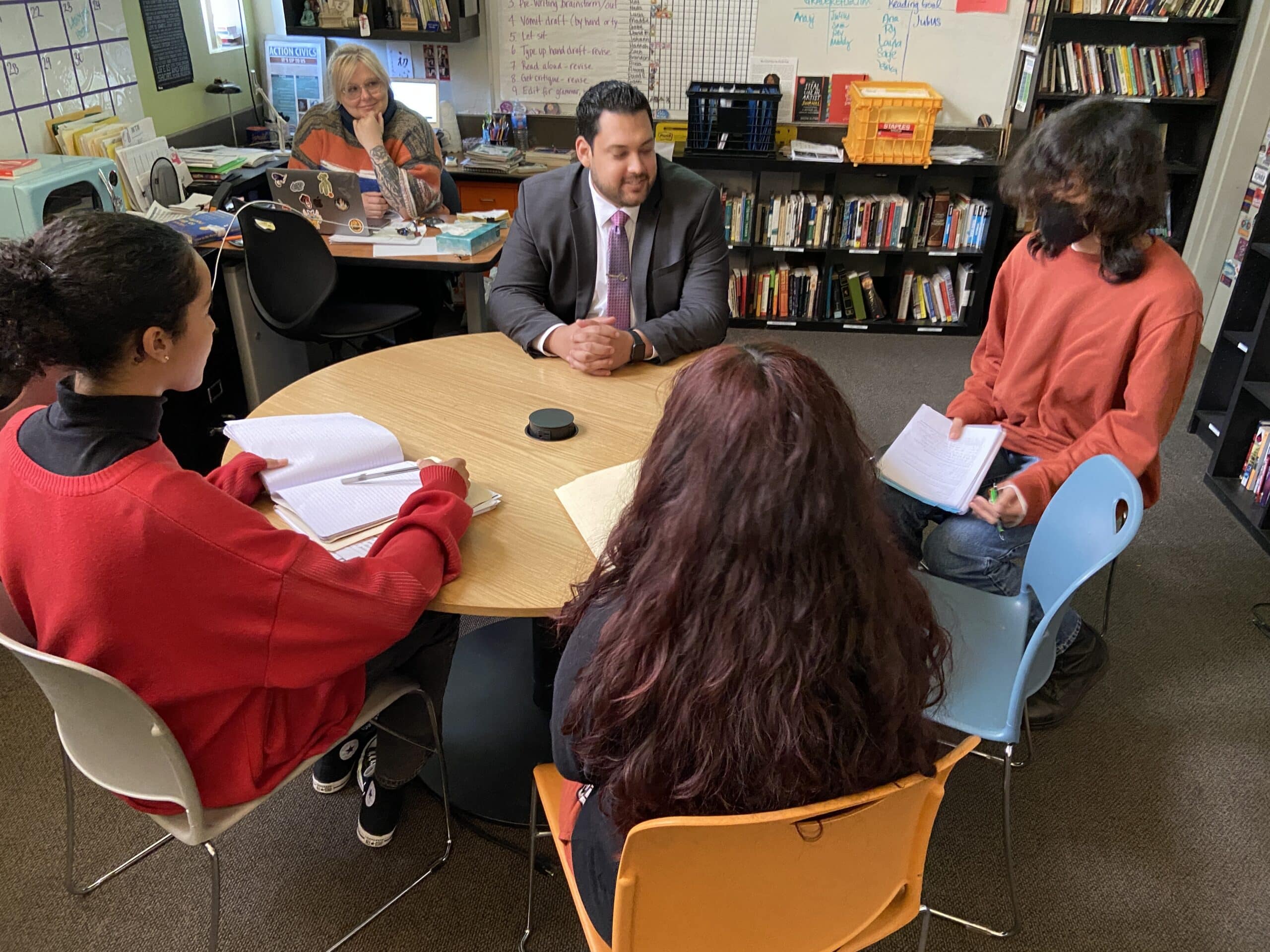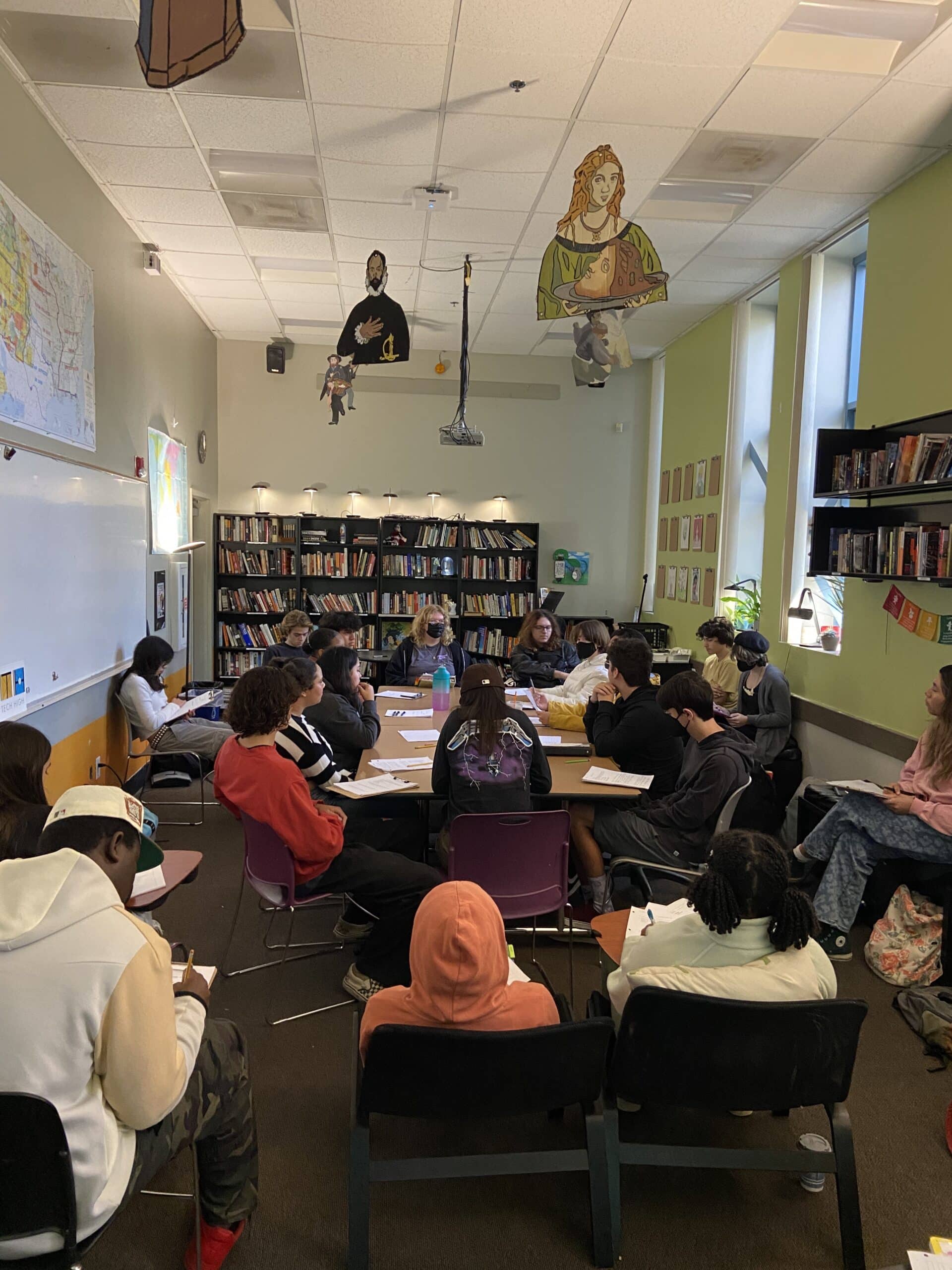
The United States ranks first among countries in the total number of people in prison and first in the highest incarceration rates among countries (World Population Review). Even some states, such as Louisiana, Oklahoma, Mississippi, Texas, Georgia, Alabama, and others, have higher incarceration rates than some countries, such as Cuba and Rwanda (Prison Policy). This is where the Innocence Project steps in. The Innocence Project is a non-profit organization that provides free legal services to those who have been wrongfully convicted. The California Innocence Project (CIP), established in 1999, is based in San Diego and works primarily in Southern California. According to information provided by the CIP, about 4% of people incarcerated did not commit the crime they were convicted of. That’s roughly 80,000 people.
For almost a decade, the CIP has had an ongoing collaboration with High Tech High. Since this collaboration began, juniors at HTH have taken on cases provided by the CIP. Students start by learning about the CIP as an organization and the systematic issues prevalent in today’s justice system. They then move to studying a practice case. Then comes the real deal. Students are put into small groups and review a case given to them by the CIP. They then go through dozens of legal files related to their assigned client provided by the CIP. Following this is a month-long process of reading key documents like the A.O.B. (Appellant’s Opening Brief). Using the documents in the case files, students create a recommendation on whether or not their client’s case should be opened. The project ends with students presenting their case to CIP lawyers. These presentations are in front of parents, teachers, and classmates and acts as the students’ unique Exhibition Day. After the presentation, a vote is taken by all those in the room on whether or not the CIP should open the case. If it is decided that the case should be opened, the CIP will use the same file HTH students had to conduct their research.
HTH students have always been involved in projects that make a real difference in the world, but this project, in a way unlike any other, has a long-lasting impact on people’s lives. This year students on the Margaret Egler and Brianna Pressey teams had a chance to be a part of this impact.
Margaret Egler, an 11th-grade Humanities teacher, has participated in the CIP and HTH collaboration for three years. During an interview, she was asked about the importance of the project. Margaret said, “This project is important to our community, our society, and to our students because we, as a country, have the world’s highest incarceration rate.”
Many people across the U.S. try to get their conviction overruled. The CIP alone receives 1500 applications a year. With those 1,500 applications comes 6,000 pieces of mail. The CIP only takes cases with clients that have exhausted all of their appeals, meaning that the CIP is some people’s last resource. “With the 1,500 applications that the CIP gets every year, they’re working on a very small staff of paid attorneys and law students, and they asked us to help them with reviewing some of these applications as a pre-screening,” adds Margaret. “We’re not the only ones that look at this, but it is an opportunity to get a set of eyes on it and to review the documents…This opportunity really highlights the HTH design principles of authentic work, equity, and personalization. And so we find that this is really an ideal project for our students to engage with.”
In addition to how the students impact the Innocence Project, this opportunity helps students learn more about the ins and outs of the justice system. “My favorite part of the project is seeing the students go from a kind of cursory understanding of the justice system to a pretty in-depth understanding,” Margaret shared. “They go from what they can pick up from TV or popular culture to actually (having) an in-depth understanding. I love how when we present to the Innocence Project and they finalize their memos that they have written, that they have become experts about this case.”
Desta Chery is a junior on Margaret’s team and had the opportunity to work on a case earlier this year. When asked about her favorite part of the project, Desta said, “I’d say it was the final product and seeing our work coming to life.”
Desta also talked about the experience of discussing the case with the lawyers. “The lawyer asked us a lot of questions. It was really cool to see that first hand, and it was just cool to work with lawyers in general because I don’t think that would happen anywhere else,” she shared.
Placed in this new environment, the students faced many challenges. When asked about the most challenging part of the process, Desta said it was, “definitely looking at all the material and all the stuff in the case that we had to do (because) we’ve never done it before…It was a lot of work, but in the end it was cool to actually do it up front.”
In this project, students learn about the unfortunate reality of wrongful convictions. “It’s way too easy for people to be wrongfully accused of something, but it’s way too hard for people to get out of being wrongfully accused,” shared Desta. “I already knew that the justice system was very unjust, but just reading about it and seeing all the amount of people that are in prison right now that are wrongfully accused…it’s way too much.”
A project with this real-world impact will have many takeaways, as Margaret mentions. “I think there’s a number of main things that I hope students take away from this project—a greater understanding about an issue that we face about (mass) incarceration. I want students to grapple with the concept of what does justice mean, and I want students to also do hard things and come out on the other side of it with that confidence that we get when we have tackled something that seems really difficult,” she said.
Despite years of involvement with the CIP, Margaret has always retained the joy that comes with students completing the project. “I would say that sense of pride for my students, their feeling of being proud of it…(being) able to handle the questions that come at them from the CIP attorneys when they’re presenting, seeing them be able to present, seeing them able to really understand and have really thought about their cases, that has never diminished. That is always a great source of joy for me as a teacher.”
Tags:

